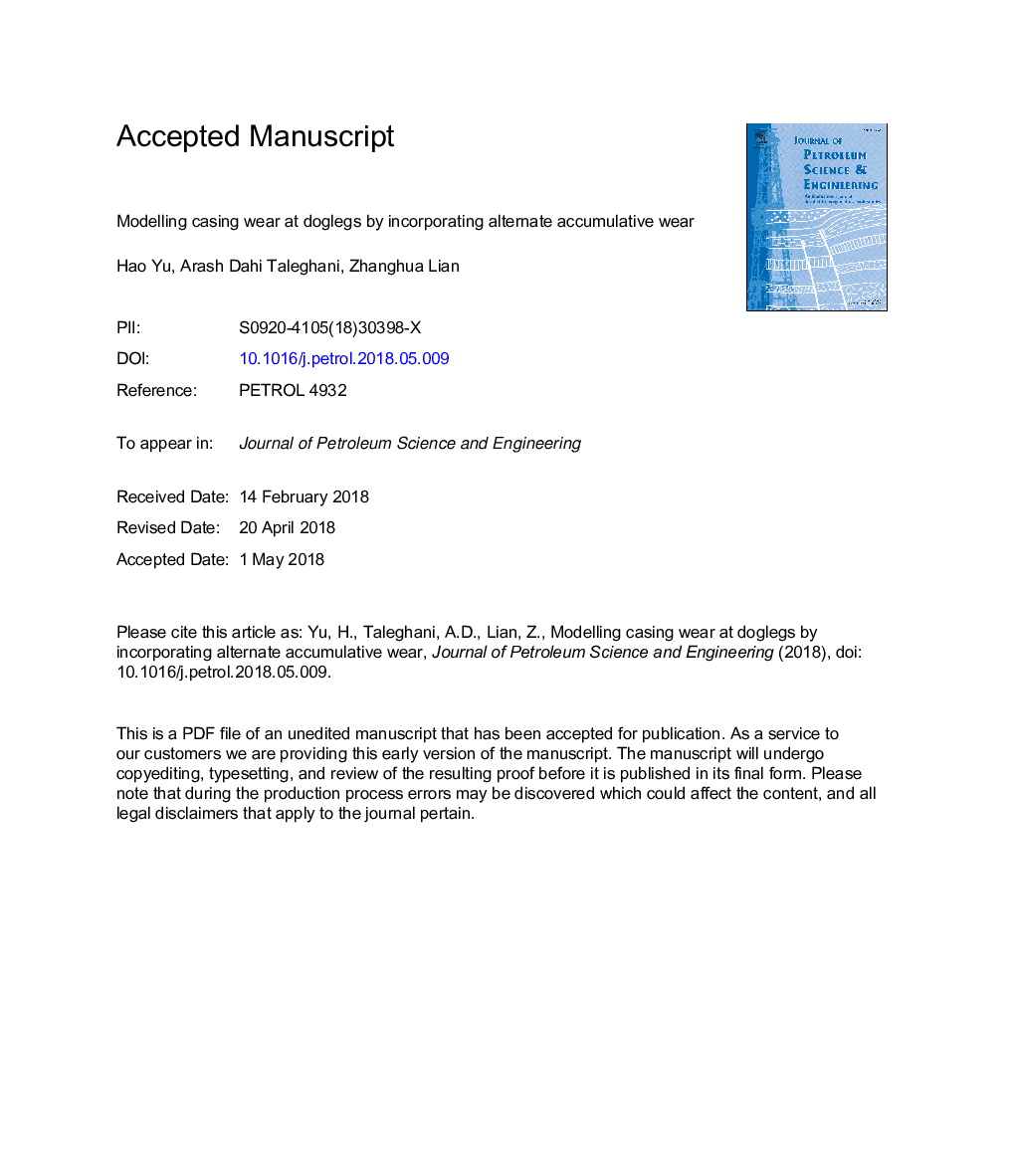| Article ID | Journal | Published Year | Pages | File Type |
|---|---|---|---|---|
| 8124693 | Journal of Petroleum Science and Engineering | 2018 | 29 Pages |
Abstract
In some situations while drilling through severe doglegs, drill strings are inevitably touching the inner wall of casing, which may wear casing harshly. For instance, this is a frequent problem in wells drilled in Bohai Bay basin in East China. In large dogleg sections of the well, casing is subjected to a dual-wear accumulation contributed by the tool joint and drill pipe (alternate wearing). Nonplanar geometry of the hole and complex geometry of the rotating drill pipe may add to the complexity of the wear process. Here, we propose a mathematical model to calculate the loss of wall thickness of the casing due to the dual wear. A finite element model is developed to incorporate wearing of the casing alternating between the tool joint and the drill pipe. Arbitrary Lagrange-Eulerian (ALE) adaptive meshing and remapping technique is utilized to specify the ablation velocity vectors at the inner casing surface. Our numerical results show that the dual wear contributions and ever changing contact geometry in alternate wearing intensifies the rate of the casing wear 150% faster than that of the single wear models. Additionally, the curvature at point with maximum wear depth has been found to significantly impact the maximum stress of worn casing. This paper provides an accumulative wear model for accurate prediction of the casing wear and its residual strength before running the casing through the dogleg section.
Keywords
Related Topics
Physical Sciences and Engineering
Earth and Planetary Sciences
Economic Geology
Authors
Hao Yu, Arash Dahi Taleghani, Zhanghua Lian,
